Europe Archives – Crown Cruise Vacations
Cruise Trivia: Why is this raven famous & where does it live
April 20, 2021 | Jackie Sheckler FinchHow about a really tough challenge? This raven is one of seven that live very pampered lives. A caretaker makes sure they are well fed and not inclined to fly away.
Every night the ravens are safely secured in their comfy cages to protect them from marauding foxes.
Cruise Trivia: Name the chapel and the movie that saved it
April 13, 2021 | Jackie Sheckler FinchThe beautiful chapel was crumbling to the ground. Gaping holes in the roof allowed the elements to take over. Huge vines grew up the pillars and over the ornate carvings. It seemed the historic chapel was destined for destruction.
Until “a miracle” saved it. Through the magic of Hollywood, a movie was released based upon a popular book. The chapel played an integral part in the film.
Cruise Trivia: Who is the man in this sculpture & where is it
August 31, 2020 | Jackie Sheckler FinchBy Jackie Sheckler Finch
This is a toughie. It has two parts. Who is the man in the sculpture and where is the sculpture located?
I might have been able to answer the first question correctly. But I’m pretty sure I would have been stumped at the second one if I hadn’t visited the museum a few months ago.
Shore Excursion: How ‘Holy Toledo’ got its nickname
October 4, 2017 | Jackie Sheckler FinchTOLEDO, Spain – About the closest my Aunt Minnie ever came to cursing was to mutter “Holy Toledo” whenever she had reached her “wit’s end,” another favorite Aunt Minnie saying.
I never knew what either of those meant when I was a kid. It took a trip to Toledo, Spain, to learn the origin of Aunt Minnie’s favorite exclamation.
Walking through the winding cobblestone streets, guide Almudena Cencerrado explained the expression of “Holy Toledo.” Suddenly, those words made sense.
When the capital of Spain moved from Toledo to Madrid, other wealthy families followed and donated their homes and buildings to the church for tax-exempt property. With so many church buildings, Toledo came to be known as “Holy Toledo.”
Even though I grew up in Ohio, I didn’t know about the connection between the Toledo in Ohio and the Toledo in Spain. I also learned that on my Spain visit.
“We are sister cities,” Cencerrado said, pointing to a tile sign on a building that pays tribute to Toledo, Ohio.
That also explains how the newspaper in Toledo, Ohio, got its name – the Toledo Blade.
“Toledo is well known for its swords and knives,” Cencerrado said. “The ‘Lord of the Rings’ sword was made in Toledo.”
So, when the newspaper in Toledo, Ohio, was first published on Dec. 19, 1835, it was named The Toledo Blade as a tribute to the heritage of its Spanish sister. Also, at the time the newspaper was founded, the Ohio-Michigan War was being waged for the control of Lucas County, Ohio.
It was believed, Cencerrado said, that The Toledo Blade would “always leap from its scabbard whenever the rights of individuals, or the community, shall be infringed.”
Photo by Jackie Sheckler Finch
Shore Excursion: Spanish city of Toledo and legend of the pins
September 6, 2017 | Jackie Sheckler FinchOnce upon a time, two lovers were separated by war. To pray for her soldier’s safe return, the young lady would visit an image of the Virgin Mary and pray every night.
Afraid that she might fall asleep during her long vigil, the lady asked her maid to stick her with a pin if she faltered in her prayers. Then the lady would present the pin to the Virgin Mary as proof of her dedication and sacrifice.
The story had a happy ending. The soldier survived and the two lovers were reunited. In honor of the blessing that took place at this site, a narrow street in the ancient Spanish city of Toledo is now named Calle de los Alfileritos (Little Pins Street).
“Today, the legend is that if you leave a pin in the little opening here at the window with the image of the Virgin Mary and ask for a boyfriend, your prayer may be answered,” said guide Almudena Cencerrado, pushing a pin through the tiny hole.
It was easy to see that many pin wishes already resided within the spot. Safety pines, bobby pins, straight pins, hat pins and long needles were piled inside the frame. Don’t know whether the pin prayer works or not. Although Cencerrado offered me a pin, I already found the man of my dreams a couple of decades ago.
Known as “The City of Three Cultures,” Toledo is filled with legends and lore from the diverse people who have lived here.
“We are a historic symbol of peace, tolerance and cooperation between civilizations,” said Javier Diaz Herranz, tourism official. “Three cultures lived here and flourished – the Christians, the Jews and the Muslims.”
Located on a mountain top, Toledo is surrounded on three sides by the Tajo River. Declared a World Heritage Site in 1986, Toledo is a university town filled with historic sites, churches and streets so narrow that even compact automobiles can scarcely navigate them. It is a beautiful city for walking.
“Every year, more and more buildings are restored and opened to the public,” Herranz said. “Toledo was once the capital of Spain, known as the Imperial City, a city that ruled the world in that time.”
Photo by Jackie Sheckler Finch
Iceland horses an unusual breed
December 22, 2016 | Jackie Sheckler FinchImagine Iceland without horses, those beautiful short husky creatures that look so striking on the country’s landscape.
That’s the way it was until the Vikings came more than 1,000 years ago and brought Nordic horses with them. Although they are smaller than most horses, I learned shortly after arriving in Iceland not to call them ponies.
“Icelanders get very offended when you say they are ponies,” said Hermann Guõmundsson, expedition team member on the Ocean Diamond. “They are much bigger than ponies.”
Not sure about that. But I will agree that the special Icelandic breed of horses is friendly, spirited, sturdy, intelligent and very important to Icelanders. The horses are known for being surefooted and able to cross rough terrain, which certainly describes much of Iceland.
“There are 75,000 horses in Iceland,” Hermann said. “They are used for sheep herding, for riding and for horse shows.”
What makes the Icelandic horse unusual
Besides their compact size, what makes the Icelandic horse unusual is that it has five walking styles and more than 100 color options. An average Icelandic horse weighs about 800 pounds and stands about 4 ½ feet tall.
Although horseback riding was a shore option one day on our Ocean Diamond cruise, I signed up for hiking instead. Passengers who did go horseback riding said the gait of the Icelandic horse is so smooth that their guide told them they could drink a glass of champagne while on horseback and not spill a drop. Of course, our riders were not drinking alcoholic beverages.
The Icelandic breed has developed a double coat for extra insulation in cold weather and has a full mane and tail. That’s why they look so shaggy and huggable, almost like a child’s toy animal.
Along with the typical gaits – walk, trot and canter/gallop – the Icelandic horse has a four-beat lateral ambling gait known as the tölt. It produces great speed very quickly, sort of like a gallop. The tölt lets a rider cover ground very quickly and comfortably. Even a 20 mph speed on a tölt gait can produce a bounce-free ride.
The flying pace is a high-speed gait which can reach up to 30 mile per hour, sort of like flooring your car for fast acceleration. This gait is used only for short distances and can equal the speed of a full gallop. At one interval in the flying pace, all four hooves are suspended off the ground. Amazing animals.
Icelandic horses are long-lived and hardy. In their native country they have few diseases. To help keep it that way, Icelandic law prevents horses from being imported into the country and exported animals are not allowed to return. This also keeps the Icelandic horse a purebred, one of the most purely bred horses in the world, so isolated and exclusive to Iceland for more than 1,000 years.
Photo by Jackie Sheckler Finch
Shore Excursion: Are Santorini ruins the fabled Atlantis?
January 21, 2016 | Jackie Sheckler FinchSANTORINI, Greece – Could this actually be the fabled Atlantis? Some people think it is and some research does support that belief.
However, others believe the mysterious Atlantis never really existed. That it was a make-believe place used by the early Greek philosopher Plato to teach a lesson in humility.
Shore Excursion: Visiting the home of Eau de Cologne in Germany
October 26, 2015 | Jackie Sheckler FinchCOLOGNE, Germany – Napoleon Bonaparte loved Eau de Cologne so much that he ordered 50 bottles a month. The famous emperor used the fragrant water extravagantly and supposedly had special boots designed where he could stash an emergency bottle of cologne.
Shore Excursion: Catacombs, Venus de Milo & much more on Milos, Greece
September 29, 2015 | Jackie Sheckler FinchMILOS, Greece – It gave me shivers just to be standing here. Tucked into a hillside on the Greek isle of Milos are the graves of early Christians. These catacombs are from the 1st century AD. It is mind boggling to consider what took place here and how long ago it happened.
Shore Excursion: Ruins of ancient Ephesus in Turkey
June 22, 2015 | Jackie Sheckler FinchCarved into stone, the drawing of a footprint may be the first public billboard advertisement ever recorded in history.
“It pointed the way to the local brothel,” guide Bulent Yurttas said, leading us around the ancient city of Ephesus. The dots on the stone represent the number of prostitutes in the brothel and the heart carving means the women are eager for love.


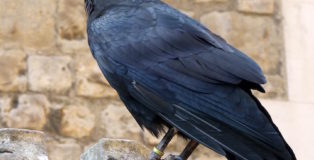
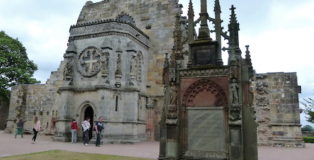
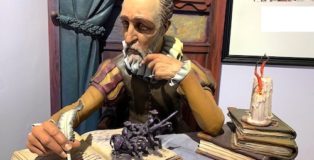
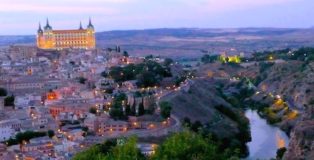
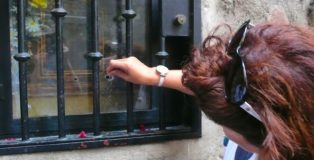


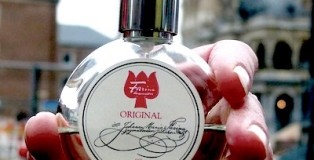
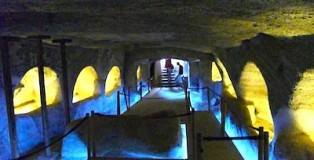
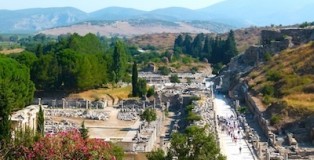












View Recent Comments